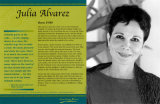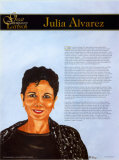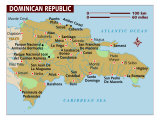|
|
||||||
|
||||||
|
|
||||||
| An Old Favorite! Authors Card Game |
||||||
|
|
||||||
 |
||||||
|
|
||||||
Julia Alvarez Educational Posters, Books, Links for Learning |
||||||||||||||||||||||||||||||||||
|
literature > JULIA ALVAREZ < women < individuals < social studies |
||||||||||||||||||||||||||||||||||
|
Julia Alvarez, In The Name of Salome, b. 3-27-1950; NYC, NY |
||||||||||||||||||||||||||||||||||
|
|
||||||||||||||||||||||||||||||||||
How the Garcia Girls Lost Their Accent by Julia Alvarez tells the story of the Americanization of four sisters and their family after fleeing the Dominican Republic in the 1960s. In the Time of Butterflies by Julia Alvarez - A fictionalized account of the martyred Mirabal sisters in the Trujillo dictorship in the Dominican Republic. In the Name of Salome by Julia Alvarez - fictional account of the real-life Salomé Ureña-the "Emily Dickinson of the Dominican Republic." The Woman I Kept to Myself by Julia Alvarez - Book of poetry exploring the theme of cultural differences. Why the Cocks Fight: Dominicans, Haitians, and the Struggle for Hispaniola by Michele Wucker - Haiti and the Dominican Republic co-inhabit the Caribbean island of Hispaniola, but their histories are as deeply divided as their cultures: one French-speaking and black, one Spanish-speaking and mulatto. Yet, despite their antagonism, the two countries share a national symbol in the rooster and a fundamental activity and favorite sport in the cockfight. In this book, Michele Wucker asks: “If the symbols that dominate a culture accurately express a nation's character, what kind of a country draws so heavily on images of cockfighting and roosters, birds bred to be aggressive? What does it mean when not one but two countries that are neighbors choose these symbols? Why do the cocks fight, and why do humans watch and glorify them?” Wucker studies the cockfight ritual in considerable detail, focusing as much on the customs and histories of these two nations as on their contemporary lifestyles and politics. Her well-cited and comprehensive volume also explores the relations of each nation toward the United States, which twice invaded both Haiti (in 1915 and 1994) and the Dominican Republic (in 1916 and 1965) during the twentieth century. Just as the owners of gamecocks contrive battles between their birds as a way of playing out human conflicts, Wucker argues, Haitian and Dominican leaders often stir up nationalist disputes and exaggerate their cultural and racial differences as a way of deflecting other kinds of turmoil. Thus Why the Cocks Fight highlights the factors in Caribbean history that still affect Hispaniola today, including the often contradictory policies of the U.S. Latin American Studies: A Companion by Philip Swanson - This guide gives a brief and accessible overview of the whole of Latin American Studies. Covering all the possible topics, from colonial cultures and identity to US Latino culture and issues of race, gender and sexuality, this book situates Latin America in its historical, linguistic and cultural context. Written by an international team of experts, the Companion includes time-lines, a glossary of terms and annotated suggestions for further reading. LINKS FOR LEARNING : JULIA ALVAREZ |
||||||||||||||||||||||||||||||||||
|
|
|
|
previous page | top |
|
|
|
NPW home | Global PathMarker Collection | APWTW Blog | faqs-about | contact | search | privacy |
|
NetPosterWorks.com ©2007-2015 The Creative Process, LLC All Rights Reserved. |
last updated








